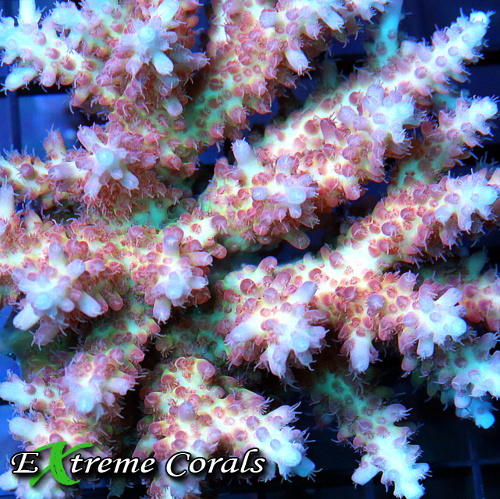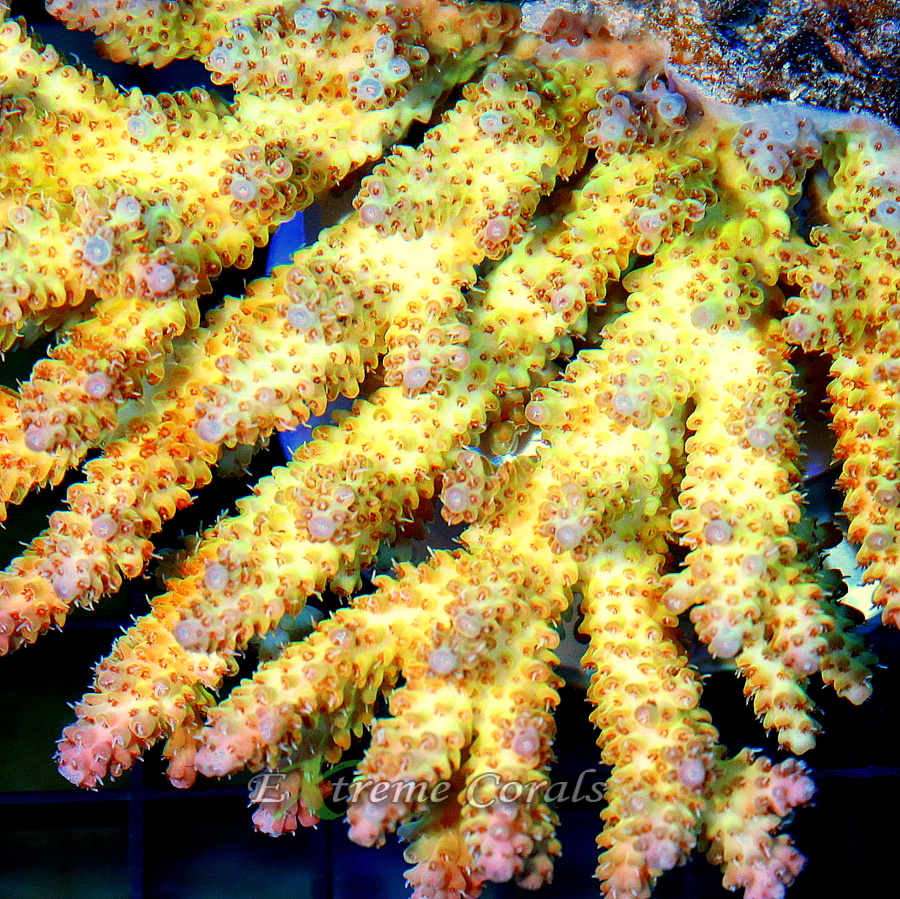Extreme Corals News and Updates
Why Acropora Coral is a Must-Have for Your Aquarium
Discover the benefits, care tips, and stunning beauty of Acropora Coral to transform your aquarium into a vibrant and healthy marine habitat.
Acropora Coral is a stunning and essential addition to any aquarium, known for its vibrant colors and intricate structures. This blog explores the top four reasons to include Acropora Coral in your tank, from enhancing visual appeal to promoting a healthy marine ecosystem. Learn about the benefits, care tips, and different types of Acropora Coral to transform your aquarium into a vibrant marine habitat
by scott Shiles • June 07, 2024
What is Acropora Coral?
Acropora Coral is a type of coral renowned for its intricate structures and vibrant colors. It is a popular choice among aquarium enthusiasts due to its beauty and its role in creating a natural reef environment in the tank. Acropora Coral benefits the overall health of the tank by providing shelter for fish and other marine life and helping maintain water quality by removing excess nutrients. Proper care and maintenance are essential for this coral species to thrive in an aquarium setting, making it a valuable addition for those looking to create a visually stunning and healthy marine habitat.
Benefits of Having Acropora Coral in Your Tank
Acropora corals add vibrant colors and natural beauty to your tank and provide a habitat for fish and other marine life, fostering a healthy ecosystem. These corals can also improve water quality by absorbing excess nutrients and reducing algae growth. Having Acropora coral in your tank enhances its visual appeal, creates a more natural environment for your aquatic pets, and contributes to the tank's overall health.
Tank Requirements for Acropora Coral
Acropora coral thrives in high light and flow conditions, making it ideal for advanced reef keepers. These corals prefer water temperatures between 72-78°F and stable water parameters, including alkalinity levels between 7-9 dKH and calcium levels between 400-450 ppm. Maintaining magnesium levels between 1250-1350 ppm supports coral growth and health. Regular testing and maintenance of these parameters are crucial for the well-being of Acropora coral in your tank.
Tips for Caring for Acropora Coral

Acropora coral thrives in stable environments with high lighting and strong water flow. Here are the top tips for caring for Acropora coral:
- Lighting: Acropora coral needs intense lighting to thrive. Place them higher up in the tank where they can receive strong light.
- Water Flow: Ensure there is adequate water flow in your tank to prevent debris from settling on the coral. Gentle to moderate flow is ideal.
- Water Parameters: Maintain stable water temperature, pH levels, and salinity levels in your tank. Fluctuations can stress the coral.
- Feeding: Acropora coral can benefit from occasional feedings of phytoplankton or other coral foods. However, they mainly rely on photosynthesis for nutrients.
Different Types of Acropora Coral
Acropora corals come in various types, including branching, tabling, encrusting, and plating. Branching corals grow vertically with many arms, while tabling corals have a flat, plate-like structure. Encrusting corals spread and cover surfaces, and plating corals form thin, horizontal plates. Each type offers a unique look and growth pattern, adding diversity and beauty to your tank.
Acropora Coral: Growth Patterns and Colors
Acropora corals have striking growth patterns and vibrant colors, making them a popular choice for aquarium enthusiasts. These corals can grow rapidly and form intricate branching structures, adding a dynamic and visually appealing element to your tank. In terms of colors, Acropora corals come in a wide range of shades, including vivid blues, pinks, purples, and greens, bringing a beautiful and diverse palette to your aquarium. Whether you are looking to create a stunning reef display or simply want to enhance the aesthetics of your tank, Acropora corals are a must-have for any aquarium enthusiast.
Importance of Acropora Coral in Reef Tanks
Acropora coral is crucial for reef tanks because it provides a natural habitat for marine life, promotes healthy water quality, enhances the tank's beauty, and supports biodiversity in the ecosystem. The growth patterns of Acropora coral also create a dynamic and visually appealing environment in your tank.
Common Issues When Keeping Acropora Coral
Acropora corals are sensitive to changes in water quality, temperature, and lighting. They are prone to issues such as coral bleaching, which can happen when the coral is stressed. Algae overgrowth is another common problem when keeping Acropora corals, as it can outcompete the coral for nutrients. Predatory snails may also pose a threat to these corals by feeding on their polyps. Lastly, poor water circulation can lead to detritus buildup, negatively impacting the health of Acropora corals.
Breeding and Propagation of Acropora Coral
When it comes to breeding and propagating Acropora coral for your tank, it's a rewarding experience. Acropora corals are known for their rapid growth rate, vibrant colors, and intricate structures. Here are a few key points to keep in mind:
- Propagation: Acropora corals are commonly propagated by fragmenting a larger colony into smaller pieces.
- Attachment: Fragments can be attached to specially designed plugs or live rock to encourage growth.
- Conditions: This process requires careful attention to water quality, lighting, and overall tank conditions.
Successful breeding and propagation of Acropora coral can lead to a thriving and visually stunning reef tank display.
Why Acropora Coral Stands Out
Acropora coral is a popular choice for aquarium enthusiasts due to its vibrant colors and unique shapes. This type of coral is known for its rapid growth rate, allowing your tank to flourish quickly. Acropora coral also plays a crucial role in maintaining the overall health of the aquarium ecosystem by providing shelter and food for various marine life. Its delicate appearance adds a striking visual appeal to your tank, making it a standout choice for both beginner and experienced aquarists.
References
- Riegl, B., & Piller, W. E. (2003). Possible refugia for reefs in times of environmental stress. International Journal of Earth Sciences, 92(4), 520-531. DOI: 10.1007/s00531-003-0328-9
- Veron, J. E. N. (2000). Corals of the World (Vol. 1-3). Australian Institute of Marine Science. ISBN: 0-642-32236-8
- Borneman, E. H. (2001). Aquarium Corals: Selection, Husbandry, and Natural History. TFH Publications. ISBN: 1-890087-47-5
- Fabricius, K. E., & De’ath, G. (2001). Biodiversity on the Great Barrier Reef: Large-scale patterns and turbidity-related local loss of soft coral taxa. In Marine biodiversity (pp. 127-144). Springer, Dordrecht. DOI: 10.1007/978-94-017-0656-3_7
- Hoegh-Guldberg, O. (1999). Climate change, coral bleaching and the future of the world's coral reefs. Marine and Freshwater Research, 50(8), 839-866. DOI: 10.1071/MF99078
- Veron, J. E. N. (2008). A Reef in Time: The Great Barrier Reef from Beginning to End. Harvard University Press. ISBN: 978-0674026797

